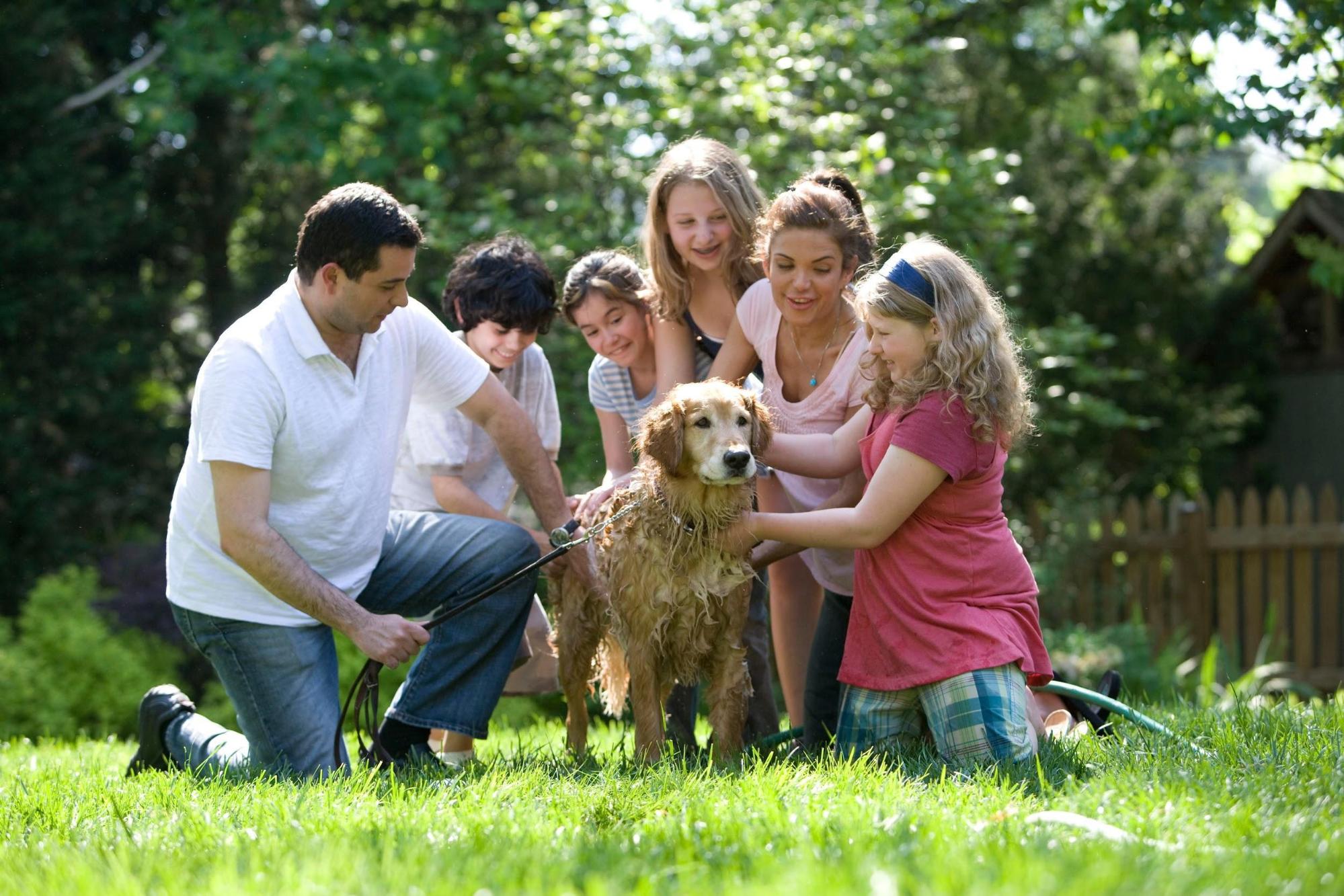
There are few things in life more exciting than bringing home a new pet. Dogs and puppies especially, bring so much joy and love into our lives that they’re sure to energize your entire household.
But before you jump into signing any adoption papers, you should consider what type of dog or puppy is right for your family. It’s no small decision!
Having a pet is a lot of responsibility. Before you decide on becoming a pet owner, you should take time to research the different dog breeds and narrow your list down to a few that might be a good fit for you and your family.
You must also decide whether to adopt from a rescue or purchase a dog from a breeder.
Where your dog comes from matters, and it can lead to an entirely different experience for you as a pet owner.
There’s no right or wrong answer here per se, but by educating yourself on all the significant factors involved in the decision, you can make the best choice for your family and ultimately lead to the happiest home for you and your pet.
Raising a puppy versus bringing an older dog into your home requires different degrees of time and commitment from everyone involved, including you, your family, and your pet. The training required will depend on your dog’s age, breed, and past experiences. Training a dog is not one-size-fits-all.
Every dog is unique, and there could be other unforeseen issues in play affecting your future pet. To outline the significant differences and provide you with some information to get you started, we are only speaking in generalities here regarding how dogs and puppies behave.
Puppies have tons of energy and will require you to be very hands-on in their training. They’ll be learning everything for the first time, from house-breaking and using a crate to walking on a leash and being comfortable with guests and other strange situations.
An older dog who has previously been homed may acclimate faster to living with people again. With any luck, they have been trained on some doggie behavior basics by their past owners.
Before making a final decision, consider that there are always more older dogs in need of adoption than younger ones.
Many of these dogs have been previously homed but are no longer with their original owners due to any number of reasons. They can make excellent pets and just need a new loving family to give them the chance to do so.
If you decide on a puppy, be prepared to handle the time and care commitment, including the late-night and early morning walks, the inevitable accidents, and additional time spent on socializing your dog into your home and world.

Another consideration is how much space do you have? Do you live in a small apartment or a large house?
It’s no fun to try and house a big dog in a tiny living space. Of course, you can make it work! In cities, owners need to take their dogs on frequent walks or trips to the local dog park. Wherever you live, dogs need some freedom to roam and move about in their environments.
The size of your dog is a factor connected to the size of your space, as well as your dog’s general energy level. Puppies will almost always be more energetic than older dogs who have calmed down over the years.
There’s also the matter of what breeds and other restrictions your landlord or apartment board will allow. You should know what restrictions apply to you before you start meeting dogs and having conversations with shelters and breeders.
Part of being a responsible owner is making sure your home will be a good long term fit for your pet.
It’s no secret that pet-related expenses can add up, so you must consult your budget before making an adoption or purchase decision. When purchasing from a breeder, the price-per-pooch can range from several hundred dollars up to the thousands for less common breeds.
When adopting, there’s still medical-related costs like vaccinations and spay/neuter costs. Many rescue organizations also require a donation to help with their overhead costs.
There are also a few often-overlooked financial factors like the size of a dog when they reach maturity. The larger the dogs, the more food they generally eat, so make sure you’re aware of how those costs will affect your monthly budget. Farmina and dogfoodadvisor are great places for people to research the best food for your dog’s size, age, and weight.

Whether or not to adopt a rescue is one of the most significant elements of choosing the right dog.
Many in the animal advocacy community are 100% pro-adoption and will tell you never to purchase a pet from a breeder or store.
Between 6 and 8 million dogs and cats are brought to shelters each year, and unfortunately, about 50% of them are euthanized—[Source: Humane Society].
However, the other 50% are adopted by families looking to provide them with a loving home for life. When you adopt a rescue dog, you can take pride that you are saving a life, and this may be an important lesson you want to share with others in your life.
Getting a dog from a breeder can help your family know what to expect when choosing the breed based on temperament and genetic behavioral traits. It’s best to avoid puppy mills and backyard breeders though.
If you’re looking into adopting from a shelter, there will be no shortage of dogs to choose from.
You are likely to find dogs of all breeds, sizes, and ages. Over 25% of the dogs in shelters are purebreds, so if you’re looking for a specific breed, it’s likely that you’ll be able to find one if you contact enough shelters.
Getting to know a dog in a shelter environment isn’t easy. Dog’s often aren’t comfortable expressing their real personality due to the sheltered lifestyle.
Shelters are typically crowded places, and dogs spend most of the day in their cage. If there’s a dog you’re interested in, ask if you can take them to a larger play area for a meet and greet or even on a short walk together.
Once they’re away from all the other dogs, they may reveal more of themselves, and you can see if there’s any chemistry.
When looking for dogs at shelters, you run the risk of falling in love with a dog that might be more work than you’re prepared to handle.
Shelters don’t always have accurate information about what a dog has been through before coming to them, and a dog might need more hands-on training and TLC than your lifestyle can accommodate at the moment. It can be a tough situation to navigate, so we want you to go into it with your eyes wide open.
If your shelter dog does exhibit aggressive behavior, contact Alpha Instincts and we can point you in the right direction as far as dog training goes.
The first step to getting to know a shelter dog is to pay close attention to their behavior as they go from environment to environment. Do they relax when you take them to the play area? Do they tense up around certain people? Do they jump or bark easily?
This is just your first impression, of course, and likely not their true personality, but they might reveal some important clues to who they are at heart.
Ask the staff to tell you more about any dogs you’re interested in and see if you’re allowed to take them into a larger area. Ask them about the dog’s history and health status and if they’ve performed any temperament testing.
If it’s possible, take a short walk and see how they loosen up when 1:1 with you.
Many dogs go overlooked in shelters, and for whatever reason, they’re not getting much interest from potential adopters. But most of these dogs will transform into amazing, happy, healthy pets when given a chance with a loving owner and are provided with the training that they deserve.
You can also inquire about fostering before committing to a full adoption, because even a neutral meeting space will not tell you what your top pick is all about.

Shelters are advocates for early-spay/neuter (sometimes as young as 8 weeks old) which can drastically affect a dog’s growth - mentally & physically. Early spay & neuter has shown to create fear, aggression, torn CCLs, early-onset hip dysplasia, etc. Paying the higher price for a breeder usually reduces the likelihood of needing a larger budget for medical bills down the line.
When working with a breeder, there are several advantages over shelters, and many people still opt to go this route when buying a pet. Breeders build and maintain their businesses based on reputation and quality service. Quality breeding can involve proper early-socialization, health & genetic testing, elbow/hip tests, pre-potty training, pre-crate training, desensitization to certain stimuli, as well as other advantages.
However, purchasing from a breeder usually entails higher expenses than working with a shelter. It’s a business like anything else and to do it properly costs the breeder’s time and money.
You’ll still be on the hook for all the medical care, training, and supplies, so it also affects your total budget. Most breeders will include the first two rounds of vaccinations before pick-up, however.
Another advantage of breeders is that you can be confident your dog is 100% purebred. Just make sure to follow up with your breeder about any specific health problems your dog may be prone to and what to be on the lookout for.
It’s also important to do your doggie due diligence and make sure you’re working with a legitimate breeder and not a puppy mill.
We’ll go into much greater detail in an upcoming article, but here are a couple of points to keep in mind:
1. The Breeder Treats Dogs With Love And Care
It seems obvious, but in a shady operation, they do not see their dogs as living beings that each require individual attention and love. Puppy mills see dogs as just products and profits waiting to be cashed in on. You will be able to tell this right away on your visit from how they treat their dogs and how they are kept.
2. The Breeder Allows You To Visit Onsite
If you aren’t allowed to visit where a breeder raises their dogs, and they only communicate over the phone or internet, that’s a sign that not everything is above board in their operation.
3. They May Not Have A Litter Available
A responsible breeder will not always have a litter available for sale. Litters are usually born in the fall and spring. Conscientious breeders make sure not to over-breed their dogs. They should have a waiting list available, and for popular breeders, their wait might be over a year.
4. The Breeder Interviews You
If your potential breeder interviews you regarding your ability to care for their pups, then that’s a good sign of the care they have for their litters and shows a commitment to place them into healthy home environments. Always answer their questions honestly when it comes to the level of care you will be able to provide your future pet.
5. Your Dog Will Always Have A Home
A responsible breeder will have a contract in place to ensure that their dogs will not end up in a shelter if it is no longer a good fit for the family. The dog goes back to the breeder and is rehomed from there.
Every dog is unique and has its personality, likes, dislikes, and overall temperament. Choosing a dog with a compatible temperament is very important, especially if you are raising the dog around small children. Some dog breeds are not known to be as child-friendly, while others are widely regarded to be excellent family dogs.
Remember, these are just generalizations to be mindful of and not specific recommendations. Dogs of any breed can be a great fit for your home and family - however, a Malinois isn’t likely to be the best fit for a young couple busy in their jobs, with young children around too.
Whatever breed of dog you end up with, make sure to spend time socializing him or her with your family and children so they can become full members of your household.
Allergies are going to be a deciding factor for some families. If a member of your household or extended family has pet allergies, it may limit your options when it comes to breeds. Fortunately, dog allergies are less common than cat allergies, but pet dander can still be an issue.
It’s not necessarily a dog’s fur that causes the allergic reaction but the combination of dried skin cells, proteins, and saliva that gets into the environment when a pet lives among humans.
Hypo-allergenic dogs breeds are an option, but be sure to check if the specific breed is actually hypo-allergenic. Not all poodles are hypo-allergenic, so it’s best to be sure before bringing the dog home.

Hair length can tie into the allergy conversation, as hair and shedding can aggravate the symptoms of pet dander. But shedding on its own can be bothersome to some people. Long-haired or fluffy dogs typically require more frequent trips to the groomers to keep their coats in top conditions.
Grooming standards aren’t created equal. For example, doodle breeds (and other high maintenance breeds) need to have higher grooming budgets. Make sure to allocate time to take them to be professionally groomed.
Some dogs have a lot to say and need to say it loudly and often. Other dogs are much more soft-spoken. How much barking can you and your family tolerate? Do you have adequate outside space to let your dog sound off? Also, we recommend you consider your neighbors and how a loud pet might affect their quality of life. Be considerate!
If this isn’t your first 4-legged pet, consider how you’ll handle compatibility issues between your new puppy and your long-time pet’s personalities. Plenty of dogs and cats share homes and get on cordially or even become close friends. When in doubt, ask Alpha Instincts for any advice as far as compatibility goes.
Of course, if you need any additional support while deciding on how to find your dream puppy feel free to send us a message in the bubble below, we’re happy to chat. You can also sign up for a training evaluation with one of our team members.